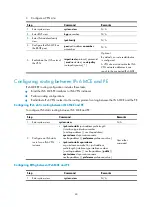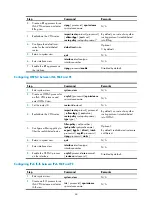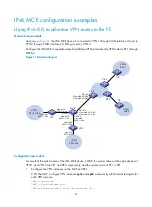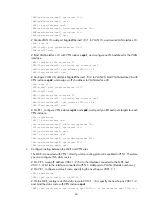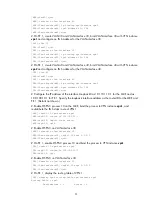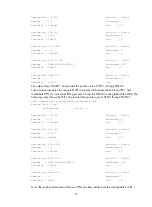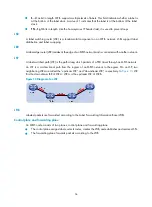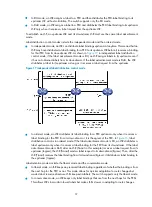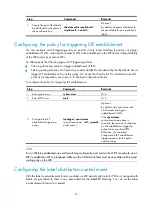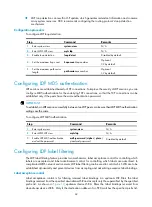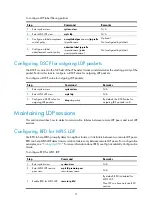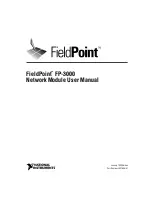
57
•
In DU mode, an LSR assigns a label to a FEC and then distributes the FEC-label binding to its
upstream LSR without solicitation. The switch supports only the DU mode.
•
In DoD mode, an LSR assigns a label to a FEC and distributes the FEC-label binding to its upstream
LSR only when it receives a label request from the upstream LSR.
To establish an LSP, an upstream LSR and its downstream LSR must use the same label advertisement
mode.
Label distribution control modes include the independent mode and the ordered mode.
•
In independent mode, an LSR can distribute label bindings upstream at anytime. This means that an
LSR may have distributed a label binding for a FEC to its upstream LSR before it receives a binding
for that FEC from its downstream LSR. As shown in
, in independent label distribution
control mode, if the label advertisement mode is DU, an LSR assigns labels to its upstream even if
it has not obtained labels from its downstream. If the label advertisement mode is DoD, the LSR
distributes a label to its upstream as long as it receives a label request from the upstream.
Figure 17
Independent label distribution control mode
•
In ordered mode, an LSR distributes its label binding for a FEC upstream only when it receives a
label binding for the FEC from its downstream or it is the egress of the FEC. In
, label
distribution control is in ordered mode. If the label advertisement mode is DU, an LSR distributes a
label upstream only when it receives a label binding for the FEC from its downstream. If the label
advertisement mode is DoD, after an LSR (Transit in this example) receives a label request from its
upstream (Ingress), the LSR (Transit) sends a label request to its downstream (Egress). Then, after the
LSR (Transit) receives the label binding from its downstream (Egress), it distributes a label binding to
the upstream (Ingress).
Label retention modes include the liberal mode and the conservative mode.
•
In liberal mode, an LSR keeps any received label binding regardless of whether the binding is from
the next hop for the FEC or not. This mode allows for quicker adaptation to route changes but
wastes label resources because LSRs keep extra labels. The switch supports only the liberal mode.
•
In conservative mode, an LSR keeps only label bindings that are from the next hops for the FECs.
This allows LSRs to maintain fewer labels but makes LSRs slower in adapting to route changes.

